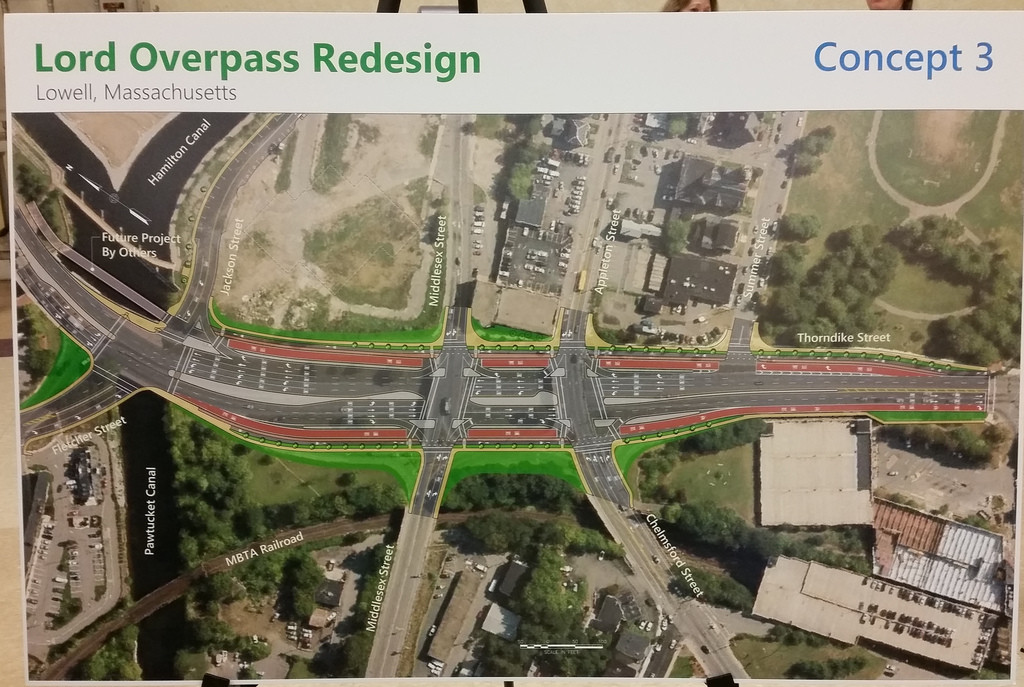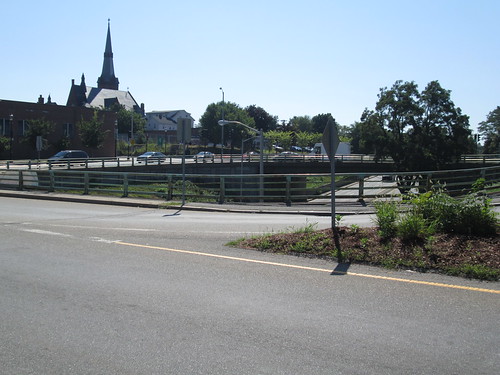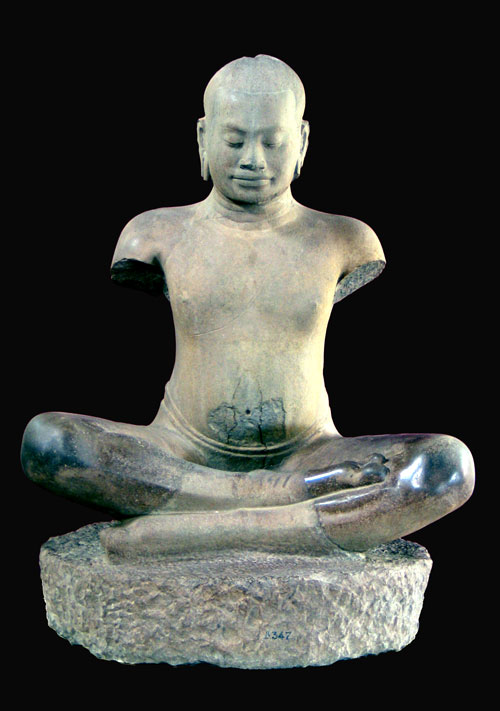Lowell Week in Review: April 3, 2016


Lord Overpass
Lord Overpass
On Monday night the city unveiled its preliminary proposal for the “new” Lord Overpass. By way of background, the Commonwealth has allocated $15mil for the renovation of the Lord Overpass and the extension of Jackson Street, a project that is directly related to the development of the Hamilton Canal District.
Today’s Lord Overpass is an unfortunate relic of the 1960s urban planning mindset that assumed businesses of the future (the mills were finished by then) would locate in city centers while workers would live in suburban homes. Traffic planning was all about finding the quickest way to get workers from their urban jobs to their suburban homes. In Lowell, that gave us things like the Lowell Connector, Fr. Morissette Boulevard, and the Sampson Connector. The Lord Overpass was designed as a highway interchange on the Sampson Connector, which remade long-established Thorndike and Dutton Streets into a highway linking the Lowell Connector to downtown.
The most egregious flaw in this strategy was the assumption that businesses would stay in the city. They did not. As workers moved to the suburbs, business and industry followed, leaving hollowed-out cities behind.
Suburban sprawl and daily traffic delays during highway commutes have led many to rethink this strategy, especially younger people. The focus of urban planning today has shifted back to cities where people can live, work, and spend leisure time in a more concentrated setting with transportation options that include buses, bicycles and walking (also known as “multi-modal transportation”).
Lowell is well-positioned to take advantage of this societal shift, provided that those in charge recognize it and plan for the future instead of replicating the failed policies of the past. As I wrote after Monday’s meeting when the new Lord Overpass proposal was first unveiled (see “Amazing Vision for a New Lord Overpass”), the city administration “gets it.” Given the positive response from the city councilors who were present on Monday (Jim Leary, Corey Belanger, Bill Samaras, and Jim Milinazzo), at least some members of the council get it, too.
The original proposal for the Lord Overpass renovation pretty much duplicated what is there now – a four lane highway running underneath an elevated traffic circle, with the two connected by four ramps. Nothing in that original proposal would have done much to improve the uninviting and dangerous existing conditions faced by pedestrians and bicyclists navigating that area.

New Lord Overpass proposal
What prompted city planners to go back to the drawing board was the extension of Jackson Street (seen in the upper left corner of the above photo). The new Lowell Judicial Center will be constructed in the vacant lot also in the upper left of the photo, between Middlesex and Jackson Streets. Other buildings, from Genesis Healthcare and Watermark, are to be built right next to that. The whole purpose of the Jackson Street extension is to bring vehicles to the new courthouse and these other new buildings. Yet under the original proposal, vehicles coming from the Lowell Connector on Thorndike Street, would be unable to turn right onto the new Jackson Street because the down ramp from the Lord Overpass would be in the way. The planners concluded they had to do away with that down ramp and the best way to do that was to do away with the entire overpass.
In this new proposal, Thorndike Street would rise up from both directions to the current level of the Lord Overpass to form a major intersection with Middlesex, Appleton, and Chelmsford Streets. That would eliminate all four ramps. The space they now occupy could be reclaimed for pedestrians and added to the greenspace that now discreetly circles much of the overpass complex.
The new proposal is not perfect. The city is bound by state road planning standards that require at least two through lanes for each direction of Thorndike Street due to the amount of traffic that now uses it. When you add dedicated turn lanes to those four through lanes, you get a very wide intersection that might leave some pedestrians unable to cross all the way from one side to the other on a single “walk” light (there will be islands between the lanes to harbor slower-moving pedestrians).
There are probably other tweaks that might be made, but proponents of better walkability and bike-ability should not lose sight of the magnitude of this proposal. The city should be praised for taking this bold approach and encouraged to continue refining it.
New Police Station Feasibility Report
The highlight of this coming Tuesday’s City Council meeting should be the formal release of the city’s feasibility report on a new police station and DPW facility which was conducted by Lavallee Bensinger Architects Design Group. The presentation slides are contained in the city council packet which is available online.
The report presents a proposal for a co-located Police Station/DPW Facility on Tanner Street, just beyond Lincoln Street on a parcel that Google images currently depicts as a junkyard. The estimated cost of the police facility per this proposal is $55mil with the DPW complex costing $35mil. (No mention of a new fire department facility). Several weeks ago when the council discussed funding for basic renovations to the current police station, City Manager Murphy kept referring to this feasibility study, predicting that the council would find the price tag of a new structure unaffordable. Murphy didn’t mention a number at that time, but now we know it will be $55mil. It will be interesting to see how the council reacts.
Council Renounces Visit of Foreign Official
I felt sorry for Mayor Ed Kennedy on Tuesday night when the city council, at the urging of several hundred Cambodian residents of Lowell who attended the meeting, voted 8 to 0 with Kennedy abstaining to “renounce” an upcoming visit to Lowell City Hall by a delegation of dignitaries from Cambodia. Kennedy was put in a difficult position simply by doing what every other mayor in the city’s history would have done under the same circumstances. (see my report on Tuesday’s council meeting for more details).
Based on Kennedy’s comments during the meeting, here’s what happened: Weeks ago, the Honorary Counsel General of Cambodia, who is based in Lowell, met with Kennedy and asked if the mayor would meet with a delegation of Cambodian officials scheduled to visit Lowell later this month. The group would be led by Cambodian Army Lt. General Hun Manet (a graduate of the U.S. Military Academy at West Point, who is also the son of Cambodian Prime Minister Hun Sen). Also in the group would be the Cambodian Foreign Minister and the Cambodian ambassador to the United States. Kennedy agreed to the visit because that’s what mayors do – they meet with people who visit the city.

Javavarman VII
The Counsel General also informed Mayor Kennedy that the Cambodian government had commission a statue of Jayavarman VII, a famous king who reigned over what became Cambodia during the 12th and 13th centuries, and that the Cambodian government asked that the statue be installed in front of Lowell City Hall. Kennedy said he was noncommittal on the placement of the statue and, after talking with City Manager Kevin Murphy, they jointly decided that the best place of it would be on the north bank of the Merrimack River where the Southeast Water Festival is held.
On Tuesday, many of the community speakers stated their opposition to the statue, calling it an attempt to bribe the community of Lowell into supporting the current Cambodian government. It was not clear whether the Cambodian community of Lowell opposes the statue itself, or just the source of the funds that paid for it (the Cambodian government). Some of the speakers even suggested that if the Lowell community was to raise money to reimburse the Cambodian government for the statue, it would be OK to keep it in Lowell.
In any case, the future of the statue is unresolved, which also put Mayor Kennedy in a difficult position since he, as every other mayor would have done, initially indicated to Cambodian government representatives that the city would accept the statute. As the Mayor put it during the meeting, the statue, which weighs several tons, is already en route to Lowell; he wondered who would pay to have it sent back.
One final thing about Kennedy: although he did not explain why he abstained from voting on the motion to “renounce” the visit and the statue, it is clear to me why he did. To do otherwise would have been an express reversal of the understandable position he had initially taken with the representatives of the Cambodian government. By abstaining, he left it to his council colleagues to override his initial decision rather than reversing his own position in the face of public pressure.
Speaking of doing things in the face of public pressure, was the council’s decision to renounce the visit the correct one? Certainly the vast majority of the estimated 400 Cambodian-Americans who were in the council chamber thought so and ratifying the wishes of a very vocal crowd was a popular choice, but will it change anything in Cambodia? Would it have been better for city leaders to meet with Hun Manet in a subdued, serious setting, perhaps with a few representatives of Lowell’s Cambodian community present, to discuss their grievances directly? If city leaders communicated to him forcefully their sincere interest in rectifying the human rights problems that continue to exist in Cambodia today and made progress in that area a pre-condition to future cooperation between Lowell and the Cambodian government, would they have done more for the cause of human rights in Cambodia than simply renouncing this visit?
The world is a messy and complicated place. The black-and-white, good-and-evil approach advocated and adopted Tuesday struck me as the same inflexible mentality that got American troops committed to Vietnam in the first place. Sometimes standing firm is the best course; sometimes diplomacy works better. (And if you want to learn more about the events in Cambodian history that seemed to coalesce in the City Council Chamber on Tuesday, please read yesterday’s post on Cambodian history).
One last thing about Tuesday night: The ability of the Cambodian community to mobilize and turn out people for this issue was impressive. I did find it ironic that it was Cambodian national politics, not Lowell city politics, that brought the crowd to City Hall. I’ve long said that with 11,000 registered voters with Cambodian surnames, the Cambodian community should not lack for representation on the city council or the school committee, yet neither of those boards has any Cambodian residents as members. Those who oppose changing Lowell’s electoral system to district councilors will be able to point to the large turnout of the Cambodian community on Tuesday as evidence that if that community were to unite behind one or more of its members as candidates for council or school committee, they would be easily elected under our current system.
I enjoyed Tuesday nights council meeting. I especially enjoyed the remarks by the older generation of Cambodian-Americans. It was great to see a group of people using democracy as a weapon against their former oppressor. The victory was mostly symbolic but it was an important first step. My question is what comes next? Nobody wants to hear this but there is a strong possibility that Hun Sen will rule for another ten years and then his son will rule for the next 30 years. What impact will this have on Lowell? Is isolation a wise long term strategy? Leadership is not always being the person that says NO the loudest. With all that said Tuesday was awesome and it made me proud of my city.
“There are probably other tweaks that might be made, but proponents of better walkability and bike-ability should not lose sight of the magnitude of this proposal.”
Bold is good, but bold isn’t everything. From a pedestrian’s standpoint, this redesign is worse. Crossing Thorndike via Appleton now, you cross 2 inhospitable and badly designed intersections from downtown to get to the Gallagher side of the roadway separated by a long traffic-free bridge. With this redesign, pedestrians cross 10 lanes of car, bus, and bike traffic. Lining the roadway with greenspace doesn’t make the actual crossing any more hospitable.
I object to this design being called “multi-modal.” It is actively hostile to pedestrians.
If it were me, I would see the current configuration as half of what the Big Dig turned out to be – the highway is already buried. All that would be required is building out the top level of the overpass into community or green space. This plan, though, is regressive and frustrating and is obviously just as, if not more, automobile-focused to the detriment of non-drivers as the current corridor is.
I would also mention that having dedicated bike lanes across the intersection in a nice idea in theory, but that without continuing those paths outside the intersection, cyclists are going to have to choose between feeding into highway-volume traffic or taking to sidewalks, and also that the cyclists I see who ride to the bus station mostly go through the back door of the garage to the upper level bike racks instead of looping around the building and having to negotiate the overpass hill on their return trip.
To cyclists, even moreso than to pedestrians, the grade of the hill is going to make or break its utilization, and without there being a destination at the south side of the overpass to make the hill worth it, people aren’t going to bother.
I get that the overpass as it stands is untenable and that the influx of car traffic to the Hamilton Canal District is going to cause even bigger problems in coming years, but making it easier to drive and park while simultaneously making it less attractive to bike or walk isn’t going to help the overall problem, it’s going to further divide the area between the people who treat the place as a destination and the people who live here.
For me, filling in Thorndike is the optimal choice for improving the area but the level of improvement we reach is dependant upon the final draft. The proposed redesign is auto-dominant that accommodates pedestrians. This makes sense if you want the same or more cars in DTL. This is valuing near term benefits over long term disadvantages. I suspect the motivation for more-than-the-standard four lanes is economic development, specifically the HCD. Truth is walking and biking is the highest returning investment we can make.
Incremental, small scale, locally owned, economic development happens over time and isn’t sexy but can happen where walking and biking is dominant and driving is accomodated. The traditional neighborhood business corridors were built this way. I’m not saying banish cars from DTL. Let’s just make driving in DTL a little less convenient. It’s a trade off worth making.
The city is accepting comments at lordoverpass@lowellma.gov